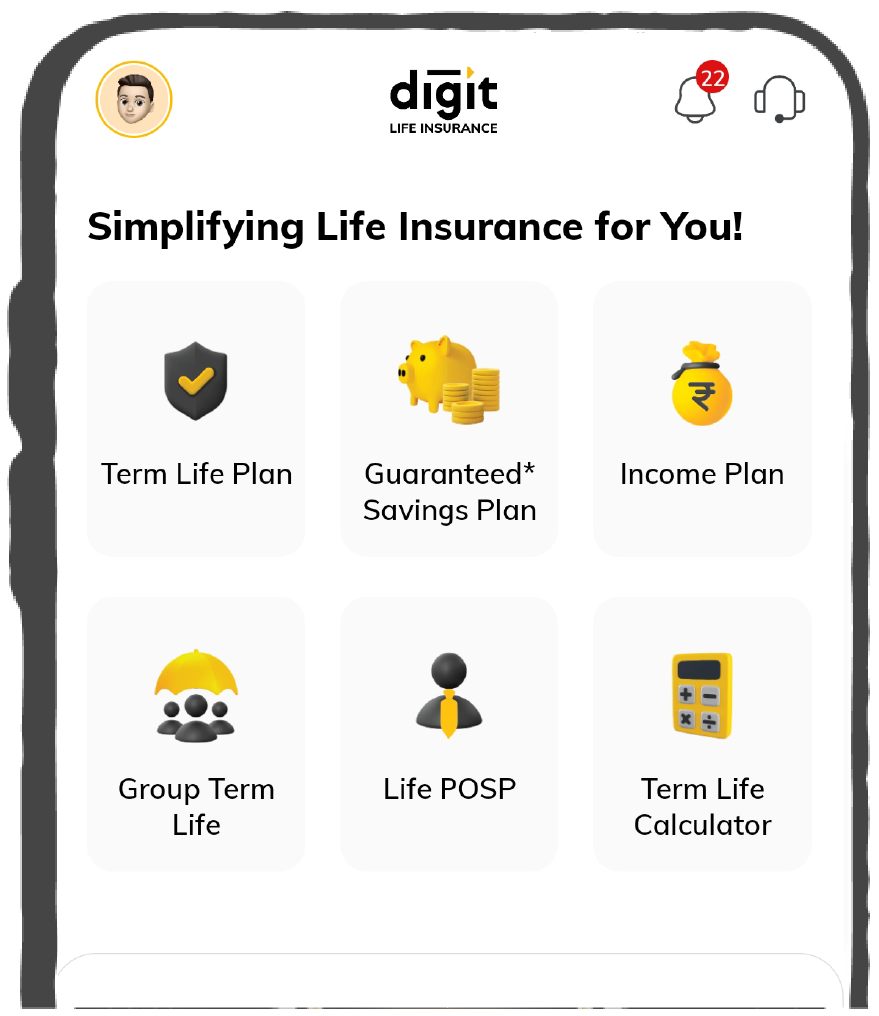Simplifying Life Insurance in India
What is a Single Premium Pension Plan & How it Works?
Everyone wants to maintain their living standards and have a quality life after retirement; however, these perks come at the cost of careful and comprehensive financial planning. So, to transition gracefully into the golden period of your life, it’ll be a good decision to start by investing in a single premium pension plan.
It is one of the most convenient and hassle-free retirement plans that offers steady returns upon one-time premium payment. Individuals can choose from different types of plans based on their risk appetite and beat inflation with a single premium pension plan.
We understand that every individual's retirement needs are different. That's why we will explore the features and benefits of a single premium pension plan in this article to help you make the best decision as per your requirements.

Table of Contents

What are the Benefits of Single Premium Pension Plans?
You will enjoy the following benefits if you choose to invest in one-time investment pension plans:
Simple and Convenient
It is the most convenient plan for retirees as it is hassle-free due to its requirement of only a one-time payment and eliminates the need for periodic premium payments.
Guaranteed Income
The non-linked plans under single premium pension plan provide retirees with a guaranteed income for the rest of their retirement life. This income stream is steady regardless of market fluctuations or interest rate changes.
Steady Income
By investing in a single premium pension plan, policyholders can ensure a steady income stream throughout their retirement years, at regular intervals, depending on their chosen plan.
Tax Benefits
A single premium pension plan offers tax benefits on premium payment under section 80C and on maturity amount under Section 10D(D), as per the prevailing tax laws. This tax benefit is subject to various conditions, so please check your eligibility beforehand. [Source]
Added Cover
Policyholders can also cover their spouse and dependent loved ones with this plan.
No Policy Lapsing
By investing in these plans, you will not have to worry about lapsing the policy on non-payment of premiums, as the policy remains active after you pay the premium once as a lump sum.
Loan Benefit
If you opt for the single premium deferred annuity plan, you can also use the plan to avail of a loan, thus serving as a financial backup.
Beat Inflation
As per your chosen single premium pension plan, you can also protect yourself against inflation, as some plans offer high returns and help to grow your wealth.
Reduced Financial Burden
Since you won’t require funds to pay premiums at regular intervals, you can save that money to manage your finances better.
Pension Plan for Everyone
No matter if you want secure and stable returns or if you have high risk-taking capabilities, single premium pension plans offer different types of policies for every individual’s needs.
How to Choose the Best One-Time Investment Pension Plan?
Check the Eligibility for the Minimum Age
Different types of single premium pension plans have different minimum age eligibility criteria for investing in the plan. So, make sure that the plan you choose meets your age requirement.Compare Plan Costs and Choose the Most Suitable One
Compare and understand the costs associated with different pension plans, then choose the one that suits your budget. These costs may include administrative charges, fund management fees, and other withdrawal charges (if any).Determine How You Want to Receive the Payout
Check the plan for the available payout options and choose the one that best suits your retirement needs - if you want a lifetime income, a fixed period, or a return of purchase price.Go for a Plan Offering Flexible Features
Always choose the plan that is flexible in terms of payout frequency, which also allows you to make changes to the payout option while the policy is still active.See if the Plan is for a Limited or Lifetime Period
Some one-time investment plans offer limited benefits, while others provide lifetime benefits. So, ensure to check this beforehand as it would be tiresome to keep up with investments every few years to get a steady income.Check the Add-ons Available with the Plan
Evaluate the pension plan for any add-ons such as guaranteed minimum return, life insurance cover, critical illness cover, etc. Depending on your requirements, these benefits are more beneficial in the long run.FAQs about Single Premium Pension Plan
Why should I choose a one-time investment plan?
What happens to the pension plan if a policyholder passes away before retirement?
What is the main difference between a single and regular premium pension plan?
How do I know if a single premium pension plan is good?
Will I receive tax benefits on the maturity amount from a single premium pension plan?
What is the difference between a single premium pension plan and term insurance?
Can I rely solely on a single premium pension plan for retirement?
Other Important Articles Related to Retirement & Pension Plans























